
PortNote gives you a clear, organized view of your entire port landscape. Add your servers and VMs via a sleek web interface, assign and document port usage across all systems, and avoid conflicts before they happen. PortNote brings structure, clarity, and control to one of the most overlooked parts of your infrastructure. In this step by step guide I will show you how to install PortNote on your UGREEN NAS using Docker & Portainer.
STEP 1
Please Support My work by Making a Donation.
STEP 2
⚠️Mandatory Add Read & Write Permissions to the Docker Folder. If you have already added the Read and Write Permissions to the Docker Folder, skip this STEP.
STEP 3
⚠️Mandatory: Update your UGREEN NAS Firmware to the latest version. Go to Control Panel / Update and update your NAS with the latest Firmware.
STEP 4
Install Portainer using my step by step guide. If you already have Portainer installed on your UGREEN NAS, skip this STEP. Attention: Make sure you have installed the latest Portainer version.
STEP 5
Go to Files and open the docker folder. Inside the docker folder, create one new folder and name it portnotedb. Follow the instructions in the image below.
Note: Be careful to enter only lowercase, not uppercase letters.
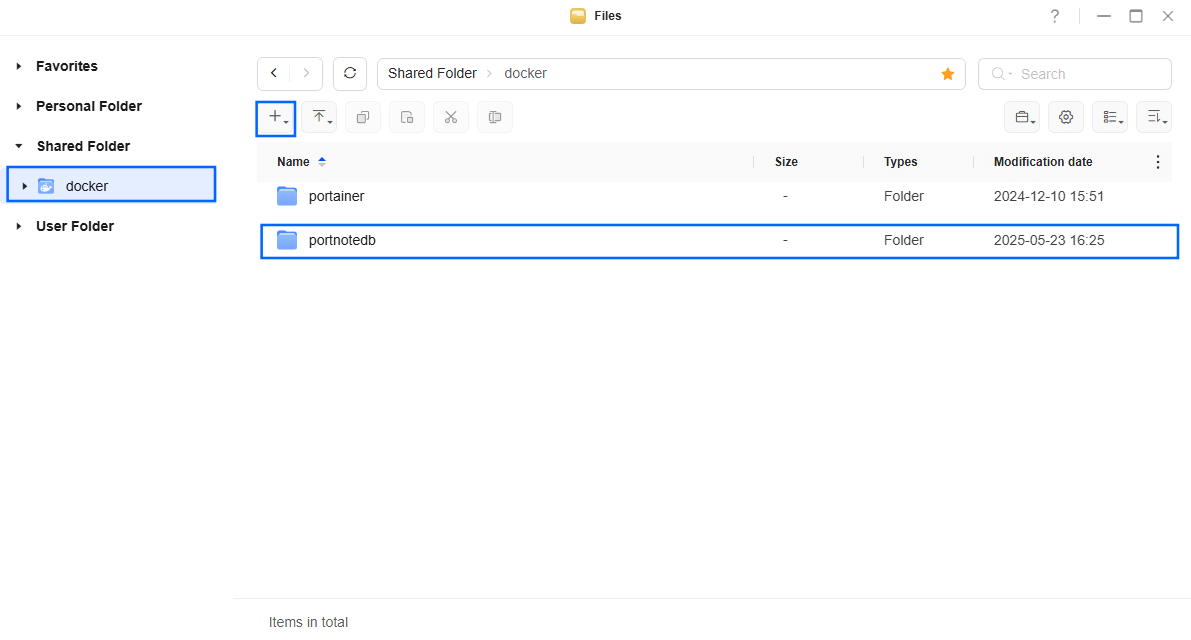
STEP 6
Log into Portainer using your username and password. On the left sidebar in Portainer, click on Home then Live connect. Follow the instructions in the image below.
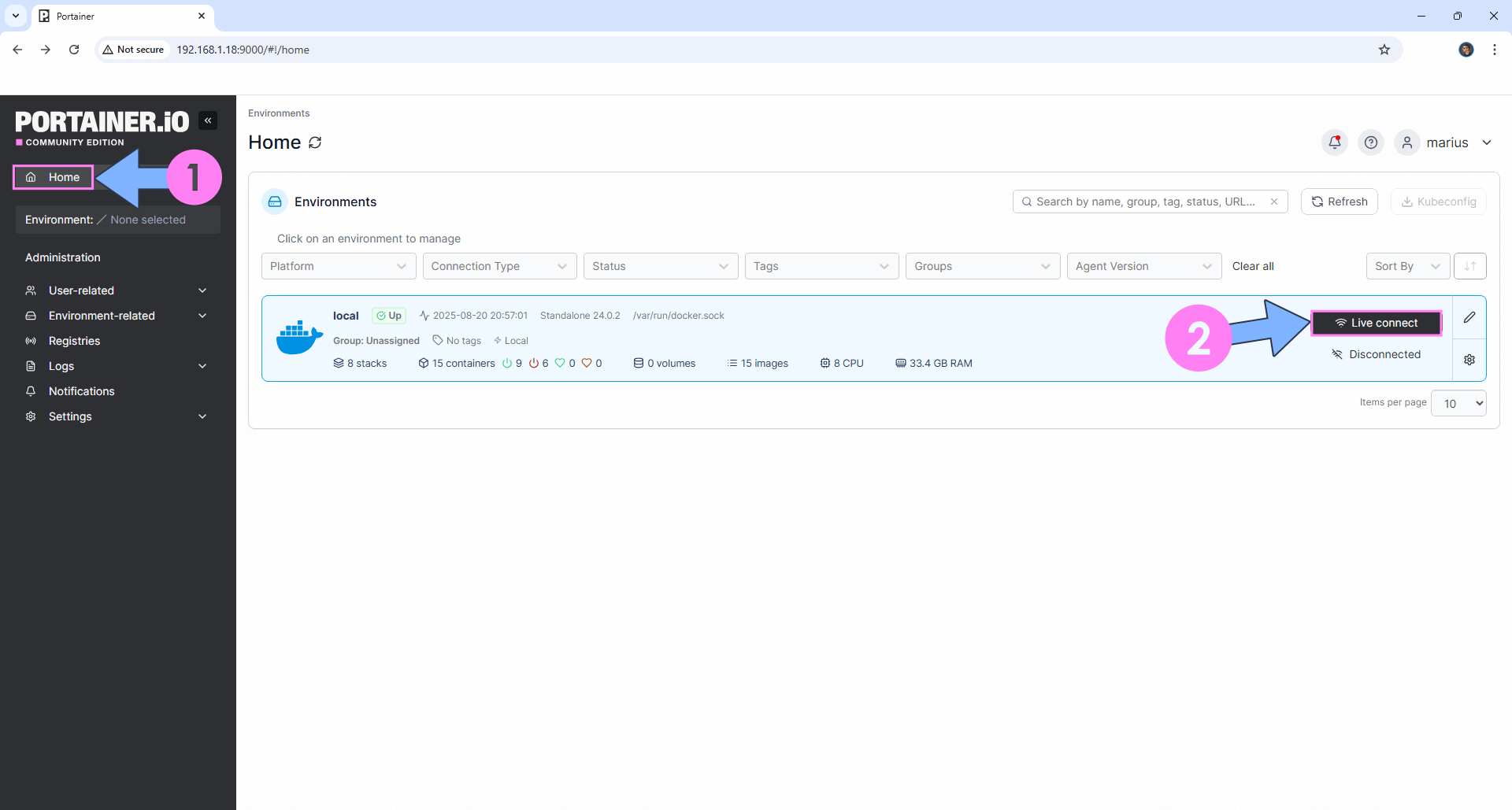
On the left sidebar in Portainer, click on Stacks then + Add stack. Follow the instructions in the image below.

STEP 7
In the Name field type in portnote. Follow the instructions in the image below.
services:
db:
image: postgres:17
container_name: PortNote-DB
hostname: portnote-db
security_opt:
- no-new-privileges:true
healthcheck:
test: ["CMD", "pg_isready", "-q", "-d", "portnote", "-U", "portnoteuser"]
timeout: 45s
interval: 10s
retries: 10
volumes:
- /volume1/docker/portnotedb:/var/lib/postgresql/data:rw
environment:
POSTGRES_DB: portnote
POSTGRES_USER: portnoteuser
POSTGRES_PASSWORD: portnotepass
restart: on-failure:5
web:
image: haedlessdev/portnote:latest
container_name: PortNote
healthcheck:
test: ["CMD-SHELL", "nc -z 127.0.0.1 3000 || exit 1"]
interval: 10s
timeout: 5s
retries: 3
start_period: 90s
ports:
- 3477:3000
environment:
JWT_SECRET: dOxZYTTZgXKMHkqLBIQVImayQXAVWdzGBPuFJKggzcgvgPJPXpWzqzKaUOIOGGIr
USER_SECRET: HrvqAeqgyyWevfHLysdkHJRlatFcliaRxzuZBqrdkGOUkCIjMdpbrWHpROIMWDDL
LOGIN_USERNAME: marius
LOGIN_PASSWORD: mariushosting
DATABASE_URL: postgresql://portnoteuser:portnotepass@portnote-db:5432/portnote
restart: on-failure:5
agent:
image: haedlessdev/portnote-agent:latest
container_name: PortNote-AGENT
environment:
DATABASE_URL: postgresql://portnoteuser:portnotepass@portnote-db:5432/portnote
restart: on-failure:5
Note: Before you paste the code above in the Web editor area below, change the value for JWT_SECRET. (Generate your own Random 64 length JWT_SECRET.)
Note: Before you paste the code above in the Web editor area below, change the value for USER_SECRET. (Generate your own Random 64 length USER_SECRET.)
Note: Before you paste the code above in the Web editor area below, change the value for LOGIN_USERNAME. Type in your own username. marius is an example for a username. You will need this Username later at STEP 11.
Note: Before you paste the code above in the Web editor area below, change the value for LOGIN_PASSWORD. Type in your own password. mariushosting is an example for a password. You will need this Password later at STEP 11.
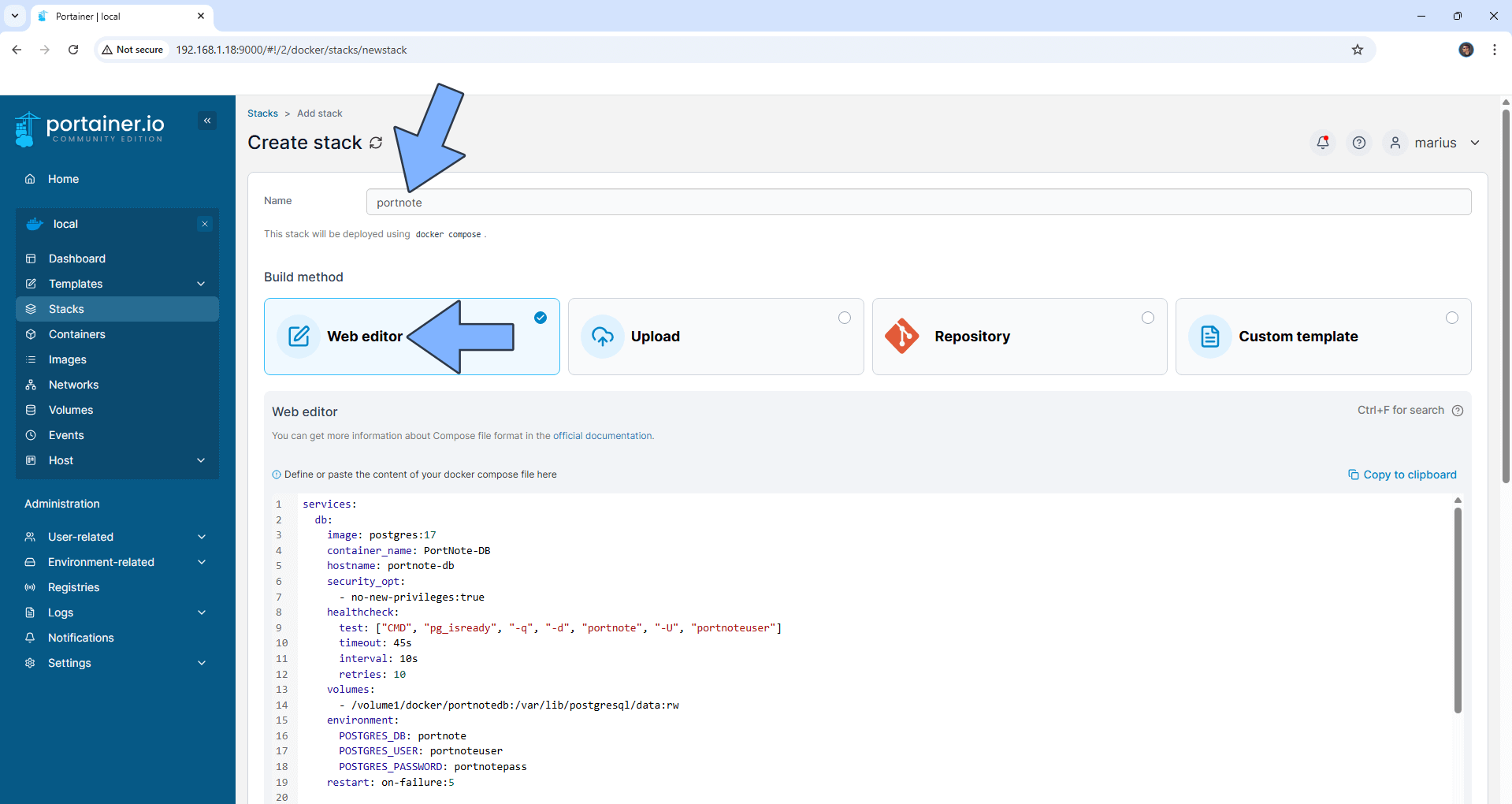
STEP 8
Scroll down on the page until you see a button named Deploy the stack. Click on it. Follow the instructions in the image below. The installation process can take up to a few minutes. It will depend on your Internet speed connection.
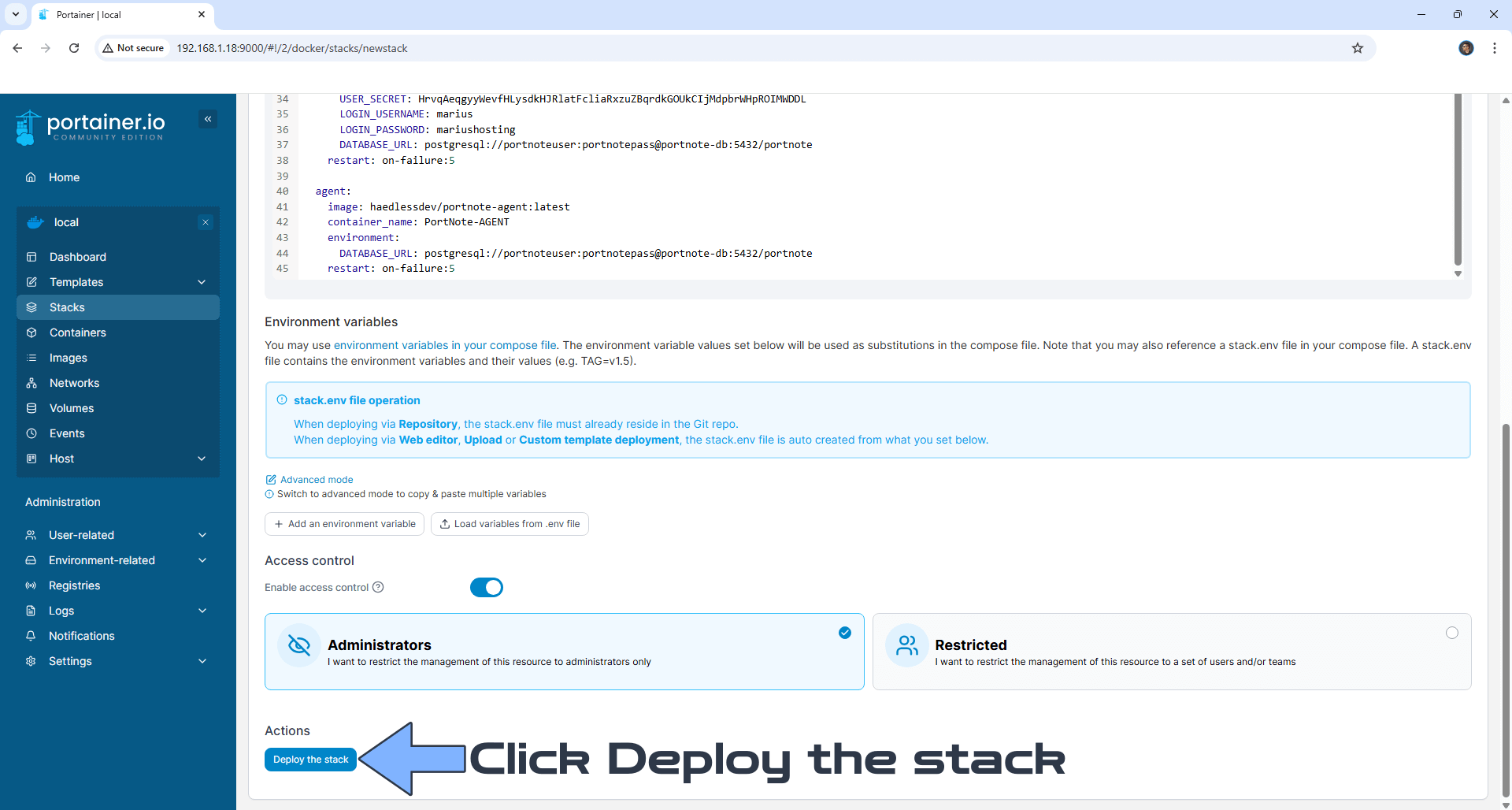
STEP 9
If everything goes right, you will see the following message at the top right of your screen: “Success Stack successfully deployed“.
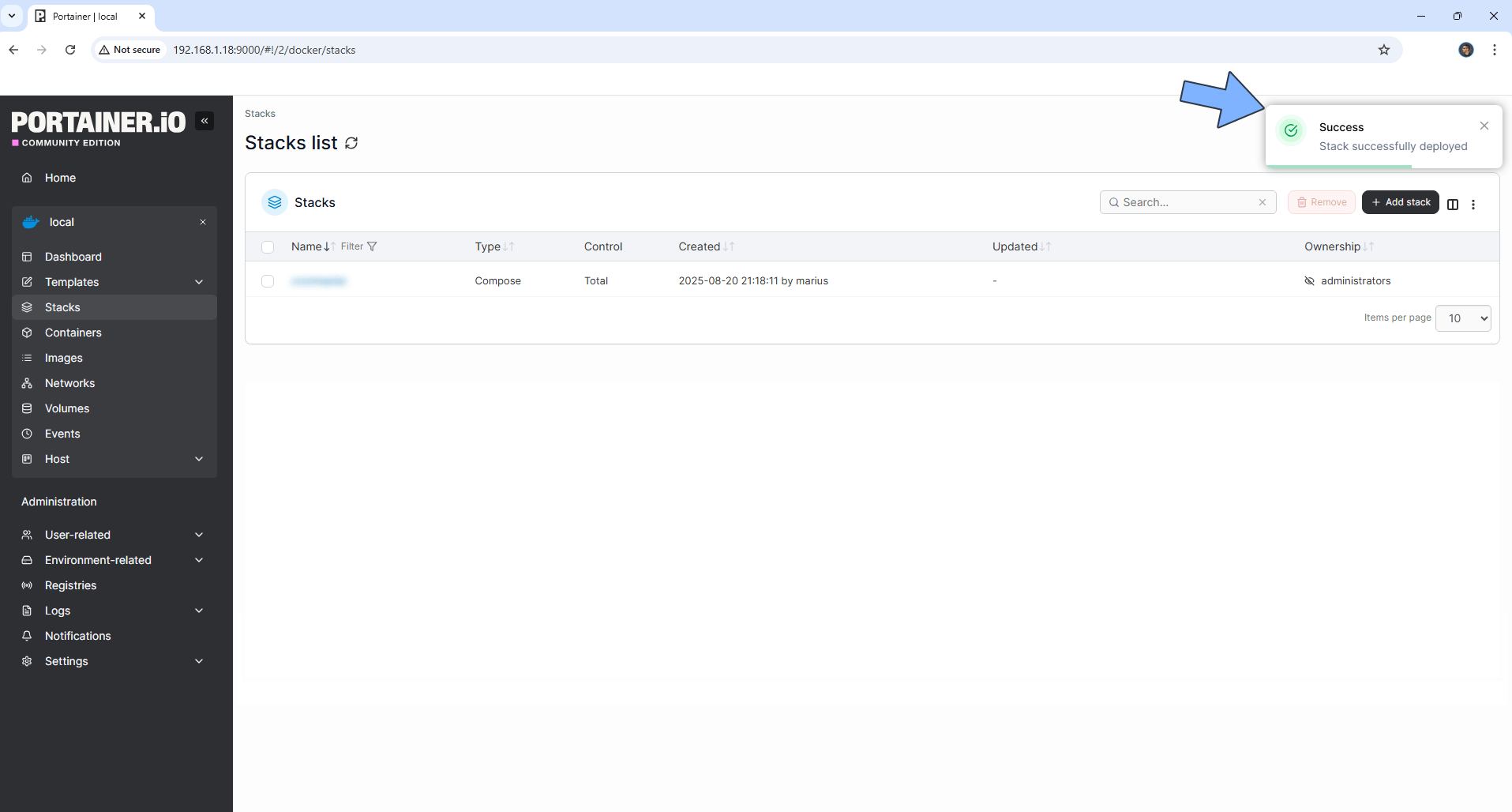
STEP 10
🟢Please Support My work by Making a Donation. Almost 99,9% of the people that install something using my guides forget to support my work, or just ignore STEP 1. I’ve been very honest about this aspect of my work since the beginning: I don’t run any ADS, I don’t require subscriptions, paid or otherwise, I don’t collect IPs, emails, and I don’t have any referral links from Amazon or other merchants. I also don’t have any POP-UPs or COOKIES. I have repeatedly been told over the years how much I have contributed to the community. It’s something I love doing and have been honest about my passion since the beginning. But I also Need The Community to Support me Back to be able to continue doing this work.
STEP 11
The installation process can take up to a few seconds/minutes. It will depend on your Internet speed connection. Now open your browser and type in http://ugreen-ip-address:3477 Type in your own Username (LOGIN_USERNAME) and Password (LOGIN_PASSWORD) that you have previously added at STEP 7. Click Login. Follow the instructions in the image below.
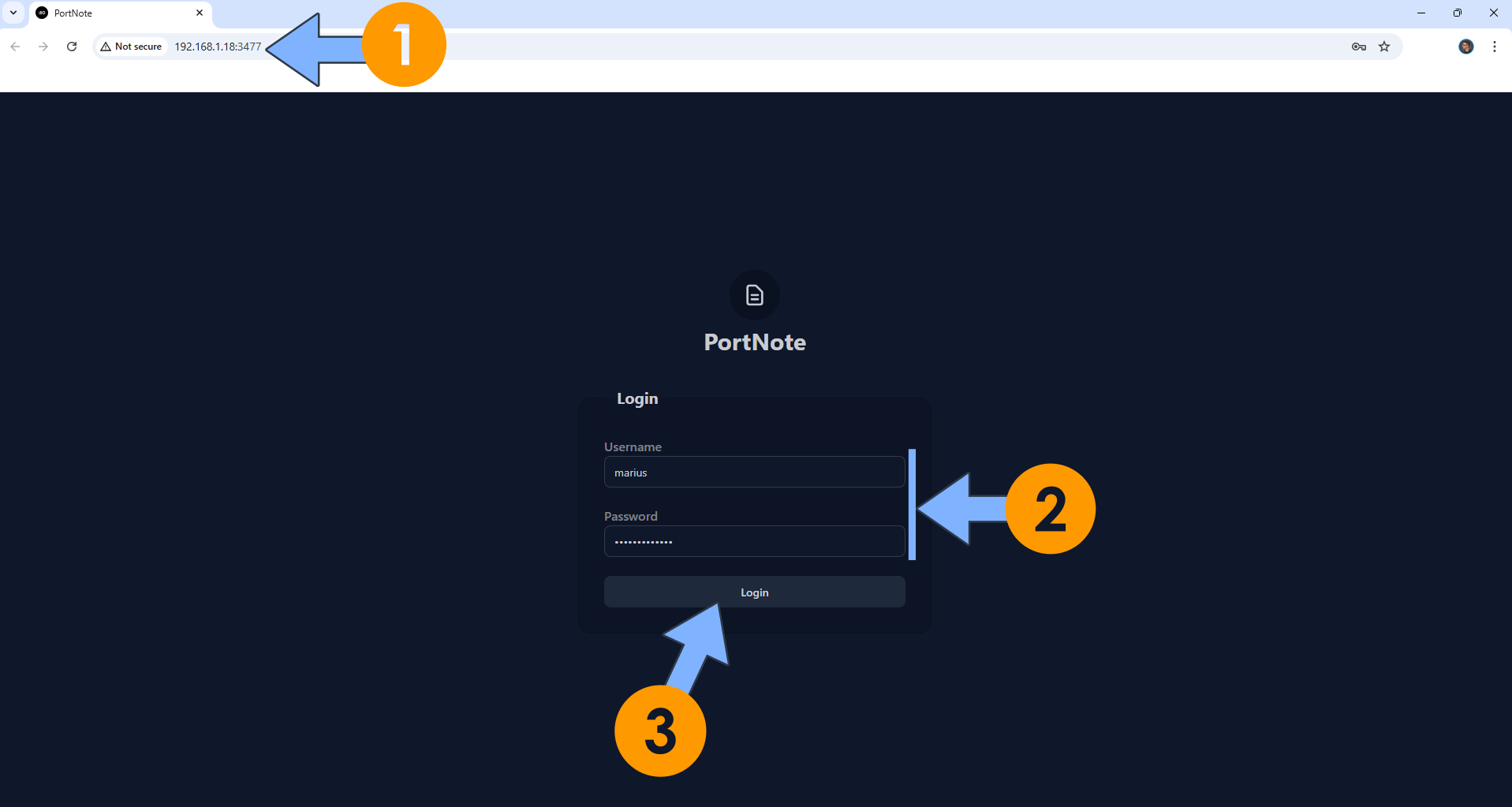
STEP 12
At the top right of the page, click the +icon to add your first Server and Port. Follow the instructions in the image below.
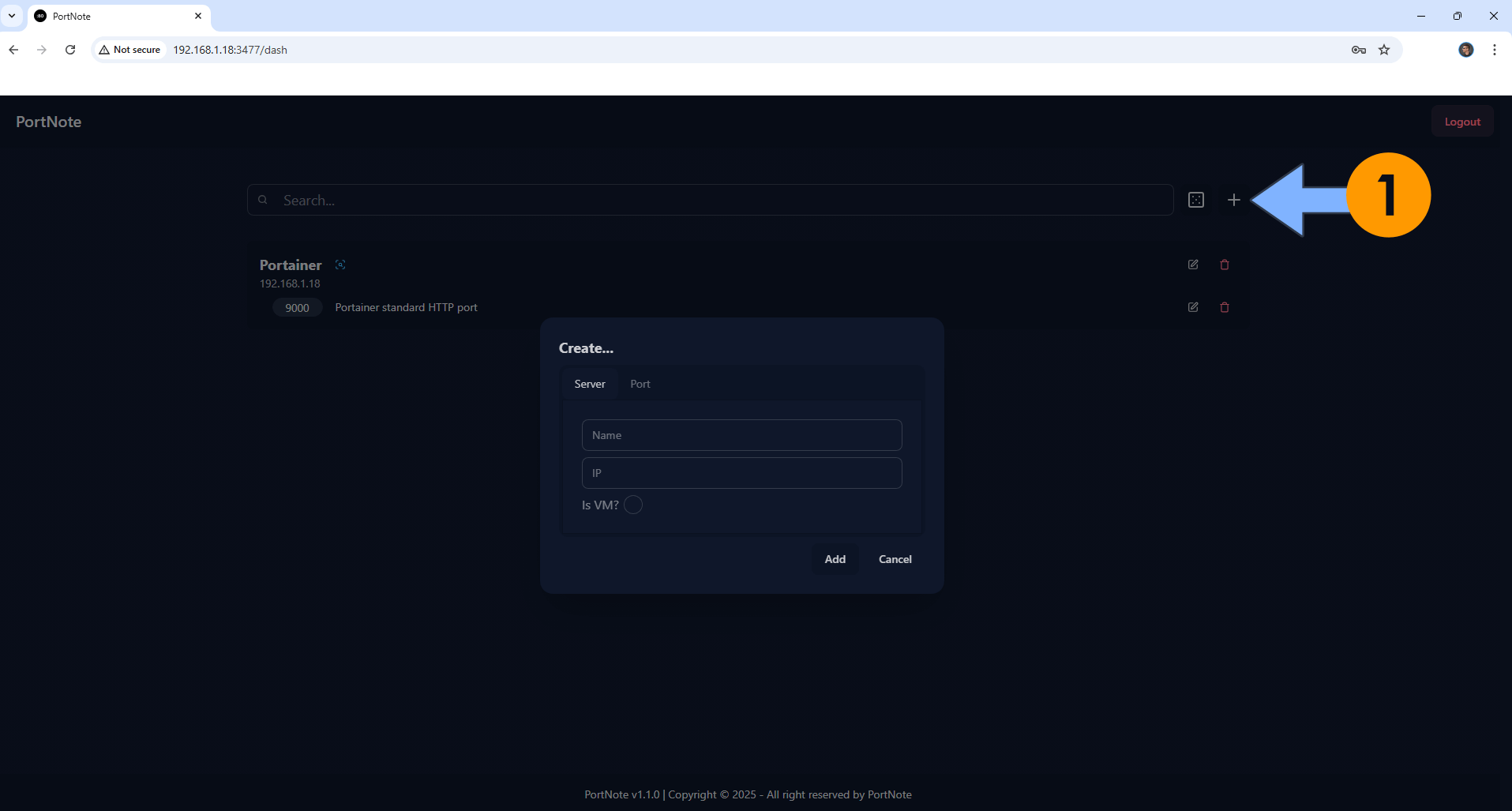
STEP 13
Your Servers and Ports at a glance!
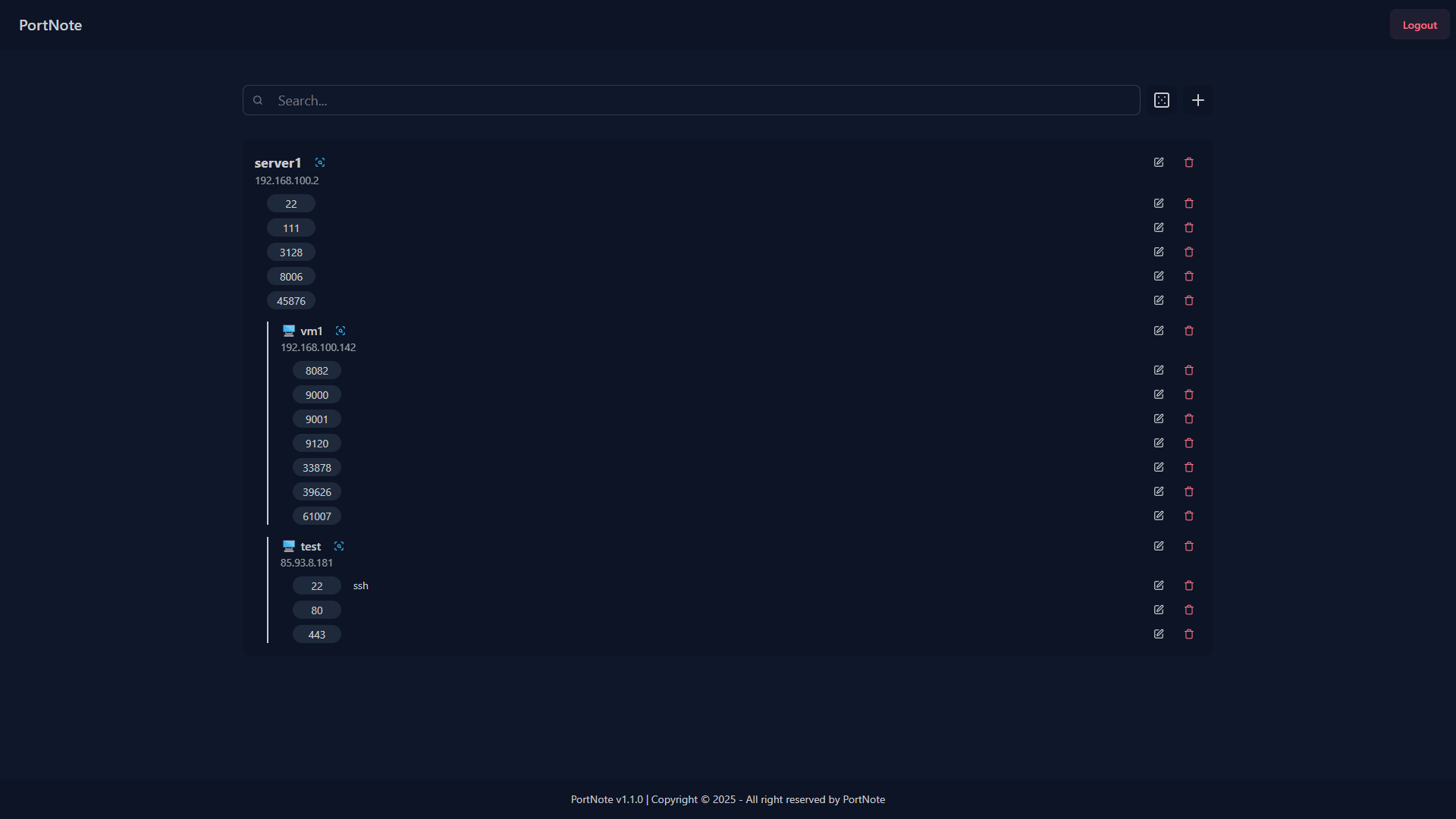
Enjoy PortNote on your UGREEN NAS!
Note: If you want to run the PortNote container over HTTPS, check out How to Run Docker Containers Over HTTPS on Your UGREEN NAS.
🆙Note/Update/Container: How to Update Your Docker Containers on UGREEN NAS Using Portainer.
🐳Note: How to Create Docker Shortcuts on Desktop.
🆕Note: How to Update Portainer to the latest version.
🆕Note: How to Clean Docker.
This post was updated on Saturday / December 6th, 2025 at 3:51 AM
